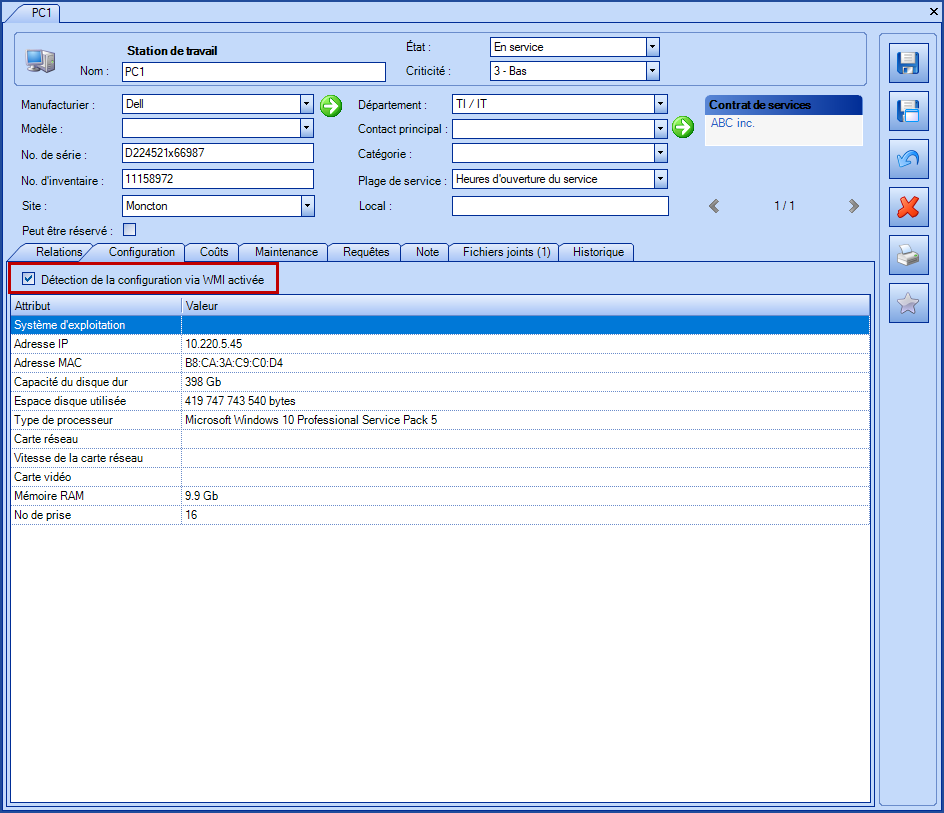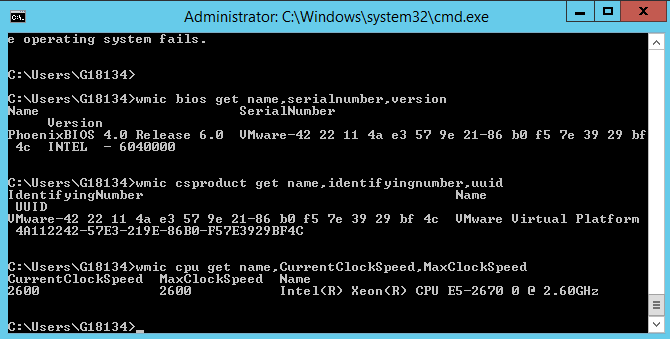Wmi Equivalent For Mac
Windows Management Instrumentation (WMI) really came into its own in Windows Server 2003.While it was available programmatically in Windows 2000, it wasn't available to us common folk until Windows XP and Windows Server 2003 were released. The following are 30 code examples for showing how to use wmi.WMI.These examples are extracted from open source projects. You can vote up the ones you like or vote down the ones you don't like, and go to the original project or source file by following the links above each example. WMI is the Windows Management Instrumentation, so that probably wont be available for Mac OSX. However, the point of WMI is that it's Windows' implementation of the non-platform-specific WBEM.
Windows Management Instrumentation (WMI) really came into its own in Windows Server 2003.While it was available programmatically in Windows 2000, it wasn't available to us common folk until Windows XP and Windows Server 2003 were released. We can get mac address from cmd also by creating process and parse the result it display but its some error prone way so let's do it perfectly using WMI way To use WMI we need to add reference to System.Management library so add reference to that by Project Menu Add reference Now Let's setup form like below and do code like below.
Released:
Windows Management Instrumentation
Project description
What is it?
Windows Management Instrumentation (WMI) is Microsoft’s implementation ofWeb-Based Enterprise Management (WBEM), an industry initiative to providea Common Information Model (CIM) for pretty much any information about acomputer system.
The Python WMI module is a lightweight wrapper on top of the pywin32extensions, and hides some of the messy plumbing needed to get Python totalk to the WMI API. It’s pure Python and has been tested against allversions of Python from 2.5 to 3.4. It should work with any recentversion of pywin32.

Where do I get it?
- PyPI: https://pypi.python.org/pypi/WMI/
- Github: https://github.com/tjguk/wmi
How do I use it?
Wmi Equivalent For Mac High Sierra
Have a look at the tutorial or the cookbook. As a quicktaster, try this, to find all Automatic services which are not runningand offer the option to restart each one:
Copyright & License?
- Copyright Tim Golden <mail@timgolden.me.uk> 2003 - 2015
- Licensed under the (GPL-compatible) MIT License:http://www.opensource.org/licenses/mit-license.php
Prerequisites
If you’re running a recent Python (2.5+) on a recent Windows (2k, 2k3, 2012, XP, Vista, 7, 8.x)and you have Mark Hammond’s win32 extensions installed, you’re probablyup-and-running already. Otherwise…
pywin32 (was win32all)
Specifically, builds 154/155 fixed a problem which affected the WMImoniker construction. You can still work without this fix, but somemore complex monikers will fail. (The current build is 219 so you’reprobably ok unless you have some very stringent backwards-compatiblerequirement).
makepy
(NB my own experience over several systems is that thisstep isn’t necessary. However, if you have problems…)You may have to compile makepy support for some typelibs. The followingare reported to be significant:
- Microsoft WMI Scripting Library
- WMI ADSI Extension Type Library
- WMICntl Type Library
If you’ve not done this before, start the PythonWin environment, selectTools > Com Makepy utility from the menu, select the library by name, andclick [OK].
Release historyRelease notifications RSS feed
1.5.1
1.5
1.4.9
1.4.8
1.4.7
1.4.6
1.3.2

1.3
1.2
1.1
1.0
1.0rc4 pre-release
1.0rc3 pre-release
1.0rc1 pre-release
0.6
0.5
0.3
Download files

Download the file for your platform. If you're not sure which to choose, learn more about installing packages.
| Filename, size | File type | Python version | Upload date | Hashes |
|---|---|---|---|---|
| Filename, size WMI-1.5.1-py2.py3-none-any.whl (28.9 kB) | File type Wheel | Python version py2.py3 | Upload date | Hashes |
| Filename, size WMI-1.5.1.tar.gz (26.3 kB) | File type Source | Python version None | Upload date | Hashes |
Hashes for WMI-1.5.1-py2.py3-none-any.whl
| Algorithm | Hash digest |
|---|---|
| SHA256 | 1d6b085e5c445141c475476000b661f60fff1aaa19f76bf82b7abb92e0ff4942 |
| MD5 | a584abbab7941b9b847c1b1d346a76a3 |
| BLAKE2-256 | eeb9a80d1ed4d115dac8e2ac08d16af046a77ab58e3d186e22395bf2add24090 |
Hashes for WMI-1.5.1.tar.gz
| Algorithm | Hash digest |
|---|---|
| SHA256 | b6a6be5711b1b6c8d55bda7a8befd75c48c12b770b9d227d31c1737dbf0d40a6 |
| MD5 | 25dd34f962186508be4fe728eb05b80a |
| BLAKE2-256 | d4666364deb0a03415f96c66803d8c4379f808f2401da3bdb183348487b10510 |
It has cropped up from time to time that we need to retrieve information, in this example, the MAC address from remotely located workstations.
While, as it goes in the world of system administration, many ways to skin such a cat, I am going to leverage both the power and versatility of Powershell combined with the vast information warehouse that is WMI (Windows Management Instrumentation).
If your remote computer is a basic configuration then we can start of something simple
In the above example, we are using the gwmi cmdlet (alias of Get-WMIObject and are interchangeable), pointing to a remote workstation with -ComputerName switch, filtered out information requested with the -Class switch, wrapping it all in brackets so we can retrieve just the returned Powershell MACAddress property.
Hopefully you will be returned a MAC Address.

However, you may find that if the device has multiple network adapters (such as teredo tunnelling for IPv6, hypervisor bridges, VPN TAPs) you are getting more noise than needed:
Never fear though, we have the technology. If you know more information about the network adapter that you want the MAC address from, we can apply filtering to the original query to bring precious to our result.
Wmi Equivalent For Macs
If you know the IP address of the network adapter:
Wmi Equivalent For Mac Os
Or if you know the type of network adapter:
Wmi Equivalent For Mac Shortcut
There you have it. A quick little one liner that taps into the vast depth of information from the WMI database via Powershell power. It is certainly worth playing around with the properties that the above WMI query can provide in return as the information stored is vast and can lead to endless amounts of utility in your future Powershell magic.